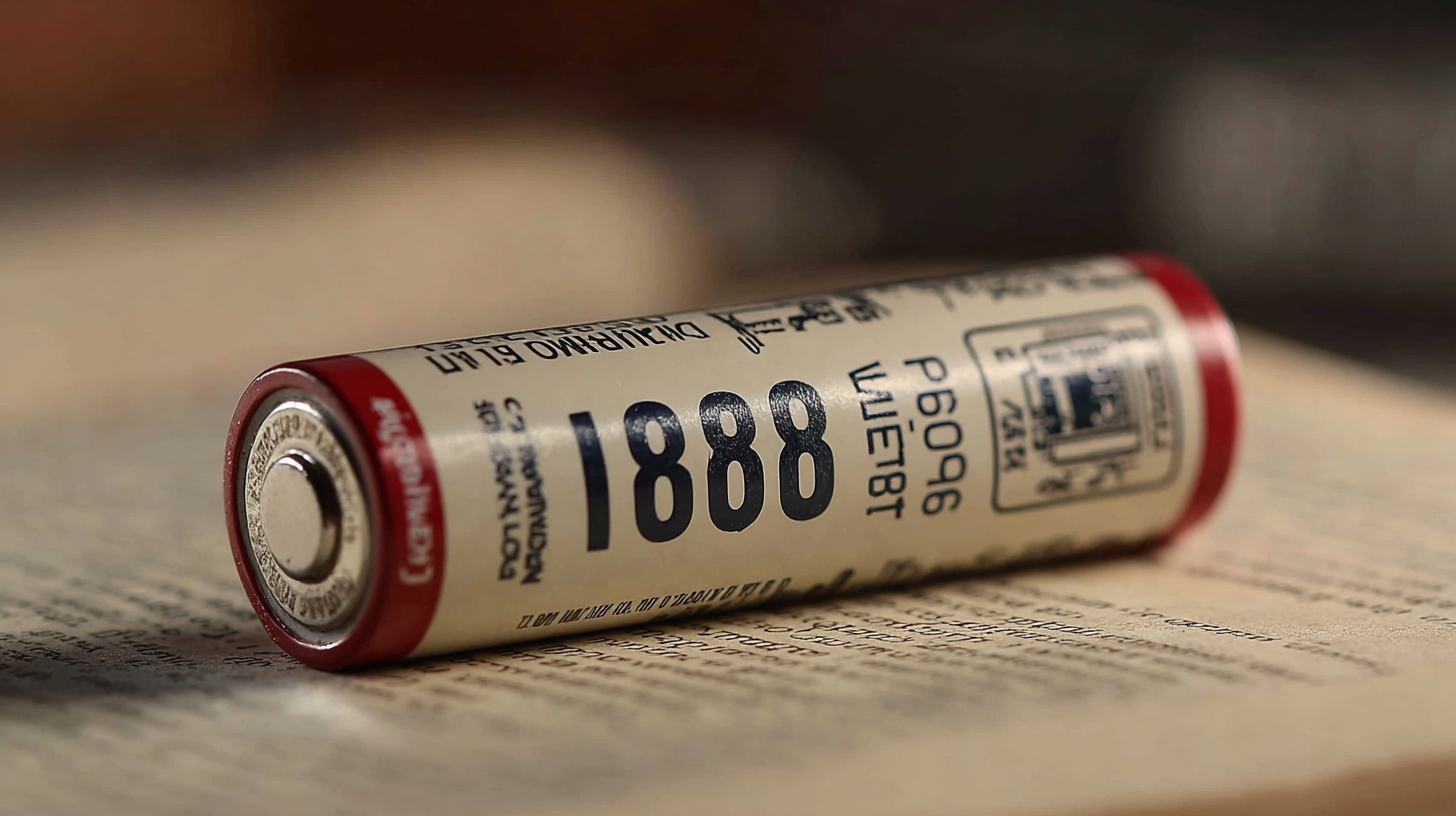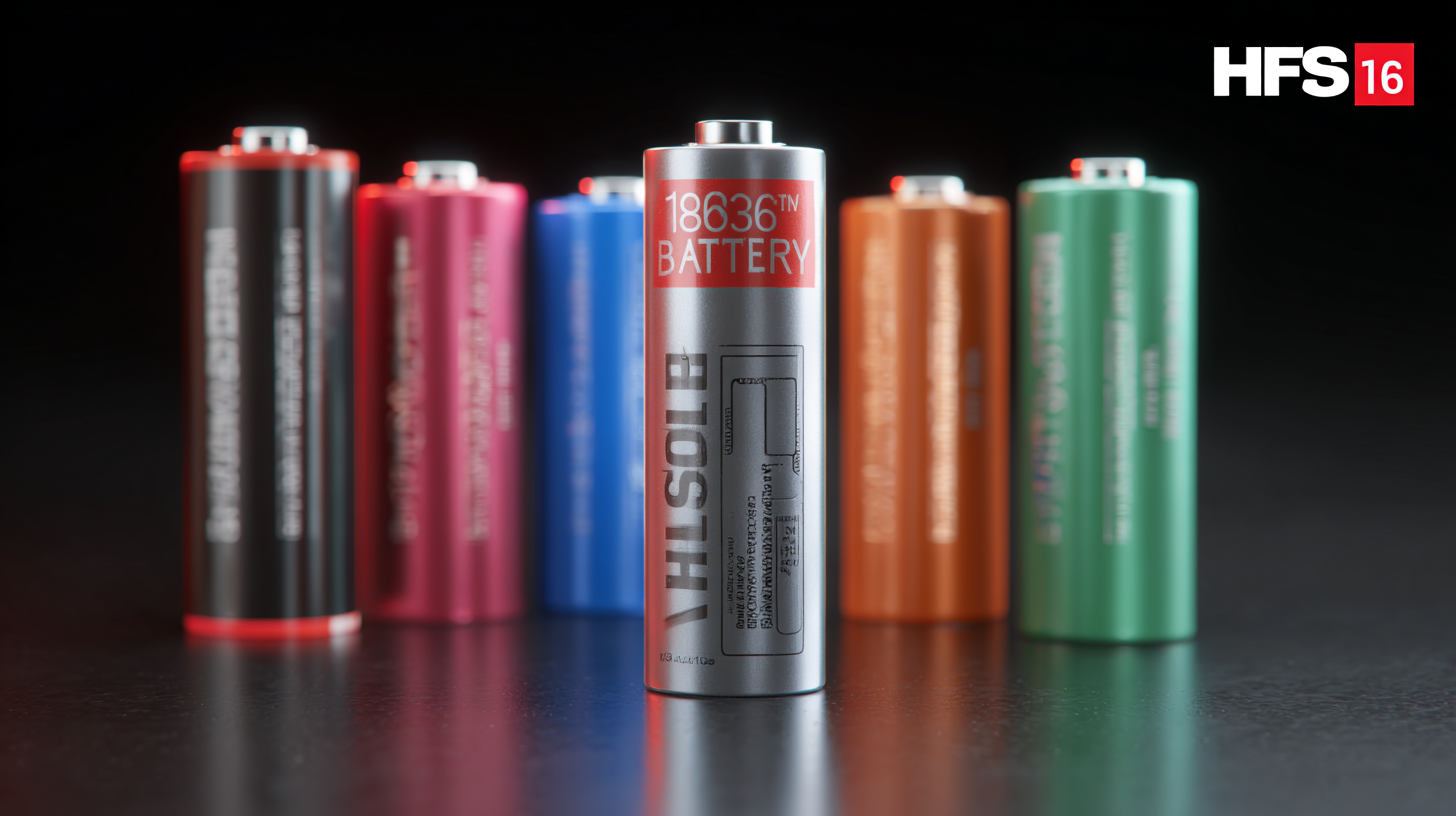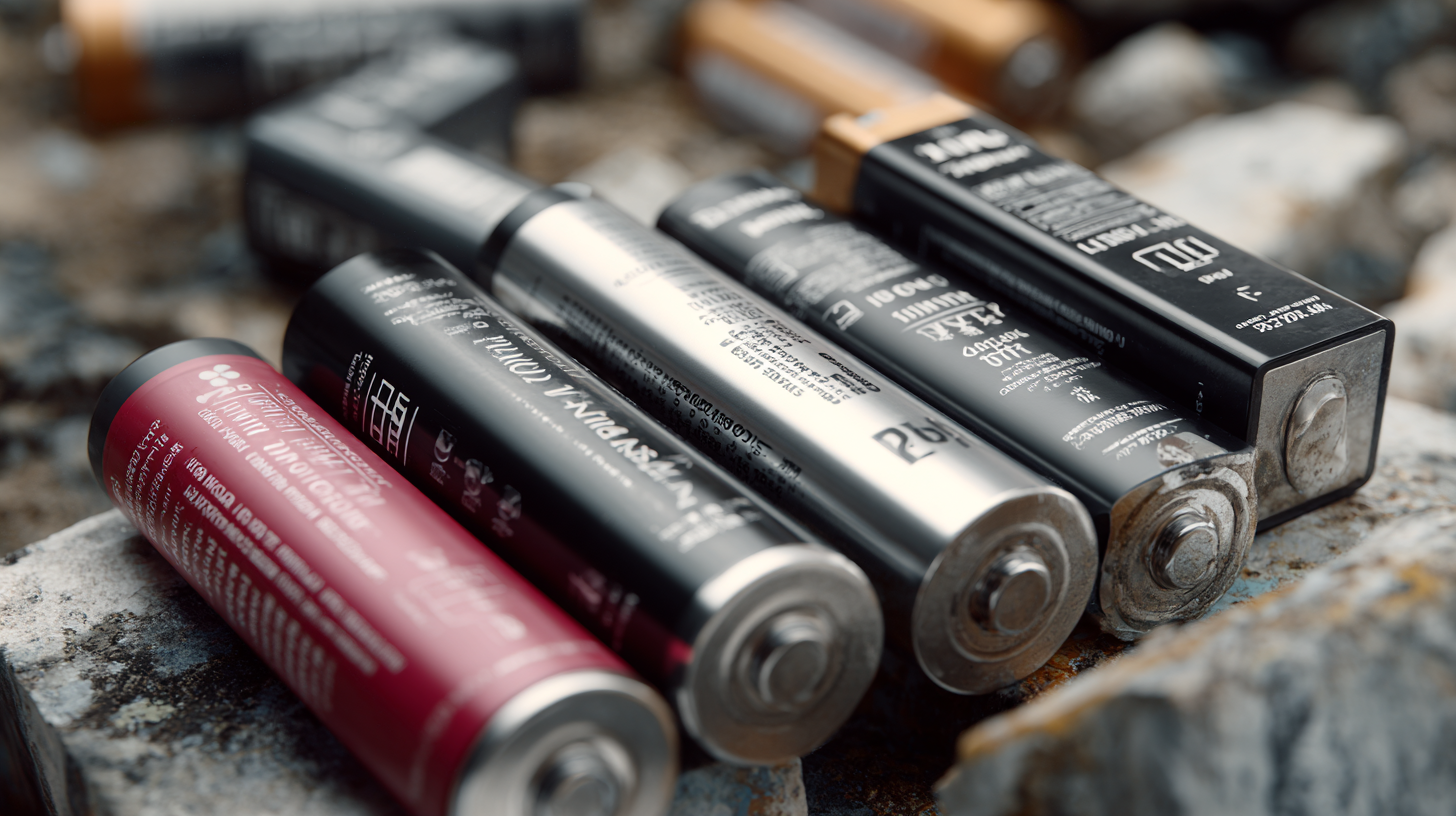In recent years, the demand for 18650 Lithium Batteries has surged dramatically, a trend that reflects their integral role in powering a wide range of applications from electric vehicles to portable electronics. According to a report by MarketsandMarkets, the global lithium-ion battery market is projected to grow from USD 41.1 billion in 2020 to USD 102.3 billion by 2025, highlighting the significant impact of these batteries on the renewable energy and automotive sectors.

Particularly, the 18650 Lithium Battery has been favored for its excellent energy density, long cycle life, and safety, making it a staple in various consumer goods and industrial applications. This blog will explore the real-world applications and competitive advantages of the best 18650 Lithium Batteries manufactured by top leading factories exporting worldwide, shedding light on how these powerhouses are shaping global markets and meeting the increasing energy demands.
The 18650 lithium battery has become a cornerstone in various technological applications due to its impressive technical specifications. With a standard size of 18mm in diameter and 65mm in length, these cylindrical cells are designed to deliver high energy density, typically ranging from 1500mAh to 3500mAh. This energy capacity enables devices such as laptops, electric vehicles, and portable electronics to run longer and more efficiently, making 18650 batteries highly sought after in today's energy-driven world.
Additionally, the discharge rates of 18650 lithium batteries vary significantly depending on the chemistry used, commonly between 0.5C to 20C. This versatility allows for a wide range of applications, from low-drain gadgets like flashlights to high-performance tools that require quick bursts of power. Moreover, advancements in battery management systems have enhanced safety and longevity, further solidifying the role of 18650 cells in global markets. With their combination of high energy density, varying discharge rates, and improved safety features, these batteries continue to unlock new potential in both consumer and industrial sectors.

The evolution of 18650 lithium batteries has dramatically transformed how we perceive energy storage in everyday applications. With their impressive energy density, these cylindrical batteries store more energy in a compact size, making them ideal for powering everything from electric vehicles to portable electronics. Their ability to pack a significant punch in terms of power output helps devices run efficiently, leading to longer usage times and improved performance. This energy density is a key factor in their widespread adoption across various global markets.
Additionally, the efficiency of 18650 lithium batteries cannot be overlooked. Their remarkable cycle life means they maintain their capacity over many charge and discharge cycles, reducing the need for frequent replacements and contributing to sustainability. Furthermore, advancements in battery management systems enhance their safety and operational reliability, allowing users to maximize their benefits. As industries continue to innovate, the applications for 18650 batteries are only expected to expand, making them a cornerstone in the push for greener technology solutions worldwide.
This chart displays the energy density of various 18650 lithium batteries measured in Wh/kg. Higher energy density indicates better efficiency and longevity, which are critical for real-world applications such as electric vehicles and portable electronics.
When selecting the right 18650 lithium battery for your device, it’s essential to consider several critical factors, including capacity, discharge rate, and cycle life. According to a report by ResearchAndMarkets, the global lithium-ion battery market is projected to reach over $160 billion by 2027, with 18650 cells leading due to their high energy density and versatility. A battery's capacity, measured in milliamp hours (mAh), indicates how long it can power your device. For instance, batteries with capacities ranging from 2000 to 3500 mAh are common in various applications, enabling devices like flashlights and electric vehicles to operate efficiently.

Additionally, the discharge rate is vital, particularly for high-performance applications. This rate is expressed in C-rating; a higher C-rating indicates that the battery can deliver power quickly without overheating. For example, a 20A discharge rate is suitable for devices that require substantial power bursts, such as power tools or drones. Furthermore, consider the cycle life of the battery—research shows that high-quality 18650 cells can sustain 500 to 1500 cycles, ensuring longevity and reliability for your electronics. By assessing these specifications, you can make an informed decision that will optimize your device's performance and durability.
The global market for 18650 lithium-ion batteries continues to expand, driven by the rising demand for portable electronics and electric vehicles. According to a recent report by ResearchAndMarkets, the 18650 battery market is projected to reach USD 43.8 billion by 2027, growing at a CAGR of 10.76% from 2020 to 2027. This surge is fueled by advancements in battery technology, enhancing energy density and lifespan, crucial for consumer electronics and renewable energy storage.
Leading manufacturers such as Panasonic, Samsung SDI, and LG Chem have set benchmarks in performance. For instance, Panasonic’s NCR18650GA model boasts an impressive capacity of 3500mAh with a nominal voltage of 3.6V, making it a top choice for electric vehicles and high-drain applications. Meanwhile, Samsung’s 30Q offers a balanced combination of capacity and discharge rate, appealing to power tool manufacturers and e-bike developers. A comparative analysis of these prominent brands reveals that while performance specifications vary, their innovations in thermal stability and charging efficiency contribute significantly to the overall safety and reliability of 18650 batteries in global markets.
| Battery Type | Capacity (mAh) | Nominal Voltage (V) | Max Discharge Current (A) | Cycle Life | Applications |
|---|---|---|---|---|---|
| Standard 18650 | 2500 | 3.7 | 5 | 500 | Flashlights, Laptops |
| High-Drain 18650 | 3000 | 3.7 | 20 | 300 | Power Tools, E-Cigarettes |
| Low-Temperature 18650 | 2600 | 3.7 | 10 | 400 | Outdoor Tools, LED Lamps |
When it comes to maximizing the performance of 18650 lithium batteries, proper charging and maintenance techniques are crucial. To start, always use a compatible charger designed specifically for 18650 cells. This not only ensures safety but also optimizes the charging cycle. It’s important to avoid overcharging; most smart chargers will stop charging once the battery reaches full capacity, but always monitor for any irregularities, such as unusual heat. Additionally, try to maintain a charge level between 20% and 80% for prolonged battery life, as deep discharges can diminish the overall health of the cell.
Regular maintenance is another vital aspect to consider. Keeping the battery contacts clean can prevent poor connections and power loss. Additionally, store your batteries in a cool, dry place, and avoid extreme temperatures, as heat can significantly impact performance and longevity. Periodically check the voltage of your batteries and conduct a capacity test if they are used in high-drain devices. By implementing these best practices, users can ensure their 18650 lithium batteries perform at their best while maximizing lifespan and reliability in various applications.


